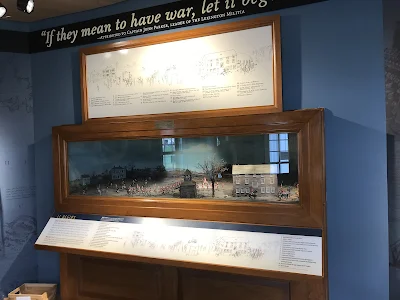Commander in Chief and Staff
Lieutenant General the Hon. Thomas Gage (Colonel, 22nd Foot), commander in chief
Major General Frederic Haldimand (Colonel commandant, 2nd Battalion, 60th, or Royal American Regiment), second in command
Col. James Robertson, Barrack Master General
Major Stephen Kemble, Deputy Adjutant General
Major William Shirreff, Deputy Quartermaster General
Lieut. Harry Rooke, 4th foot, Aide de Camp
Capt. Brehm, Aide de Camp
Capt. Oliver De Lancey, 17th Light Dragoons, Aide de Camp
Samuel Kemble, Esqr., Confidential Secretary
1st Brigade
Brigadier: the Rt. Hon. Hugh, Earl Percy (Colonel, 5th Foot)
4th Regiment of Foot, or the King’s Own (Lt. Col. George Maddison)
23rd Regiment of Foot, or the Royal Welch Fusiliers (Lt. Col. Benjamin Bernard)
47th Regiment of Foot (Lt. Col. William Nesbitt)
1st Battalion, British Marines (Major John Pitcairn)
2nd Brigade
Brigadier: Robert Pigot (Lt. Col., 38th Foot)
5th Regiment of Foot (Col. the Hon. Hugh Earl Percy)
38th Regiment of Foot (Lt. Col. Robert Pigot)
52nd Regiment of Foot (Lt. Col. Valentine Jones)
3rd Brigade
Brigadier: Valentine Jones (Lt. Col., 52nd Foot)
10th Regiment of Foot (Lt. Col. Francis Smith)
43rd Regiment of Foot (Lt. Col. George Clerk)
59th Regiment of Foot (Lt. Col. Ortho Hamilton)
18th Regiment of Foot, 3 companies (Capt. John Shea)
65th Regiment of Foot, 2 companies (senior officer unknown)
Troops not brigaded in garrison, Castle William, Boston harbor
64th Regiment of Foot (Lt. Col. the Hon, Alexander Leslie)
4th Battalion, Royal Regiment of Artillery (Col. Samuel Cleveland)
35 Battery (Capt. William Martin)
38 Battery (Capt. Lt. W. Orcher Huddlestone)
39 Battery (Capt. Anthony Farrington)
42 Battery (Capt. Lt. Robert Fenwick)
British Marines, shipboard detachments (Adm. Samuel Graves)
Royal Engineers (Capt. John Montresor)
SOURCES:
Thomas Gage, Distribution of His Majesty’s Forces in America,” July 19, 1775, Gage Correspondence, II, 690; Gage to Richard Rigby, July 8, 1775, with enclosure, “List of General and Staff Officers on the Establishment in North America, from 25th December 1774 to 24th June, 1775,” ibid., II, 687-89.
Vincent J.-R. Kehoe, “We Were There!” April 19, 1775 (mimeographed typescript, 1974), vol. I,
11-27; Barker, British in Boston, 9, 11; Mackenzie, Diary, I, 8; Regimental Rosters, Muster Books and Pay Lists, W012/2194-7377, PRO





















.jpg)


.jpeg)
.jpeg)

.jpeg)
.jpeg)



.jpg)

.jpg)
.jpg)













